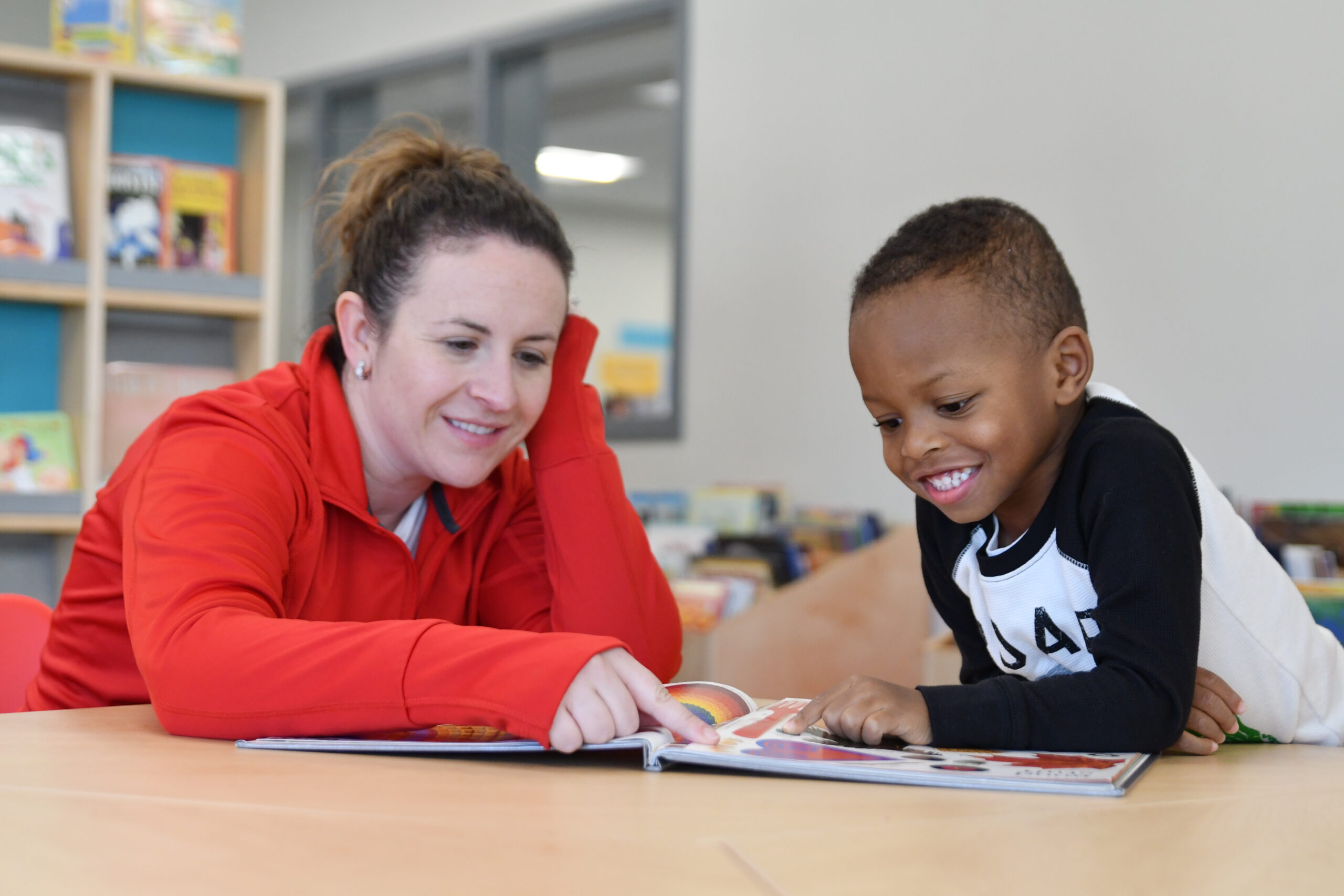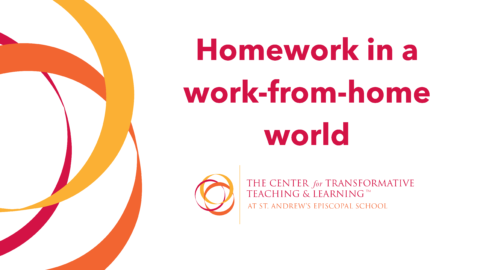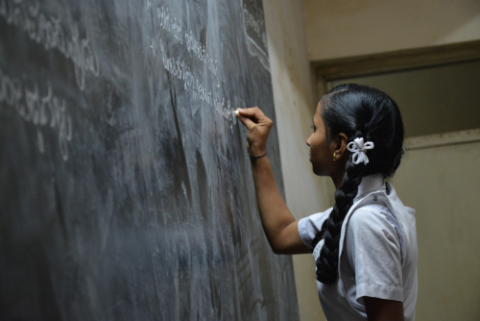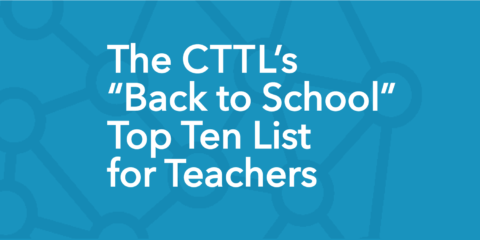In November 2022, the CTTL interviewed Alyssa Morris, the Lower School Librarian and Technology Integration Specialist at St. Andrew’s Episcopal School in Potomac, MD. Alyssa is in her 17th year as an educator. At St. Andrew’s, she taught fifth grade for five years before transitioning into her role as librarian three years ago. Alyssa has contributed to the development of several professional learning resources used by Lower School faculty at St. Andrew’s, including the student effort rubric. She was a part of the research and development team for the MBE Strategies Roadmap for Elementary Educators, a tool created by the Center for Transformative Teaching and Learning (CTTL) for Lower School faculty at St. Andrew’s and distributed to partner schools globally. She is also a translation group leader at the CTTL’s annual Science of Teaching and School Leadership Academy.
CTTL: Can you tell us about your first introduction to Mind, Brain, and Education Science, or the science of learning?
AM: When I think about when I was actually introduced, it was probably when I started at St. Andrew’s. I think I had heard about it beforehand, and it was talked about, but I wasn’t really into it. I didn’t really know what it was. I kept hearing the term MBE, but I didn’t know much about it. When I started here, the All Kinds of Minds training was my first formal introduction to it. In my first year, they gave me the [MBE Strategies] Placemat, and helped me understand the way to use that, and then being introduced to the [Science of Teaching and School Leadership] Academy was when I started all of my research into background information on [MBE].
CTTL: What has your journey with MBE been like since then?
AM: I started with the All Kinds of Minds training and from there, slowly applied it into my classroom because, at the time, I was teaching fifth grade. And figuring out how I could incorporate all of that, using the proper terminology, making all of the connections, doing all of the professional development that Glenn [Whitman] brings in for us on brain education, reading Neuroteach, helped me bring it into my training. When I started in the library role was really when Chris Lewis pulled me in to help because that was about the time we were coming up with the [MBE Strategies] Elementary Roadmap. So, from then she asked me to help find the research for the Roadmap, which brought me in a little bit deeper and then I started with the Academy. That’s the journey and progression to where I am now and incorporating it into my daily work.
CTTL: I’m curious about what MBE practice looks like for you in application. Are there one or two things that you try to do consistently with your students?
AM: Consistently, I truly try to have well-being at the forefront of my mind…and making sure that, when my students come into the library, they know that there’s a certain routine and a schedule so that it – maybe – lessens some of the anxiety. They know that there’s going to be a check-out time and having the consistency of knowing that we’ll have a few minutes at the end for that…So, that well-being, that mindfulness of [students] knowing that this is how class goes, this is the structure, and I know what to expect. I think those are some of the things that I really try to incorporate every day.
I usually have my Roadmap near me somewhere. So, as I’m lesson planning, I’m looking at it. If I’m feeling stuck, I can see what I’m missing. If a class goes wrong, I can look back at what I was missing – was I missing that novelty piece of it, was I missing some sort of connection there? So, I just try to keep that in mind and do that reflection and feedback for myself.
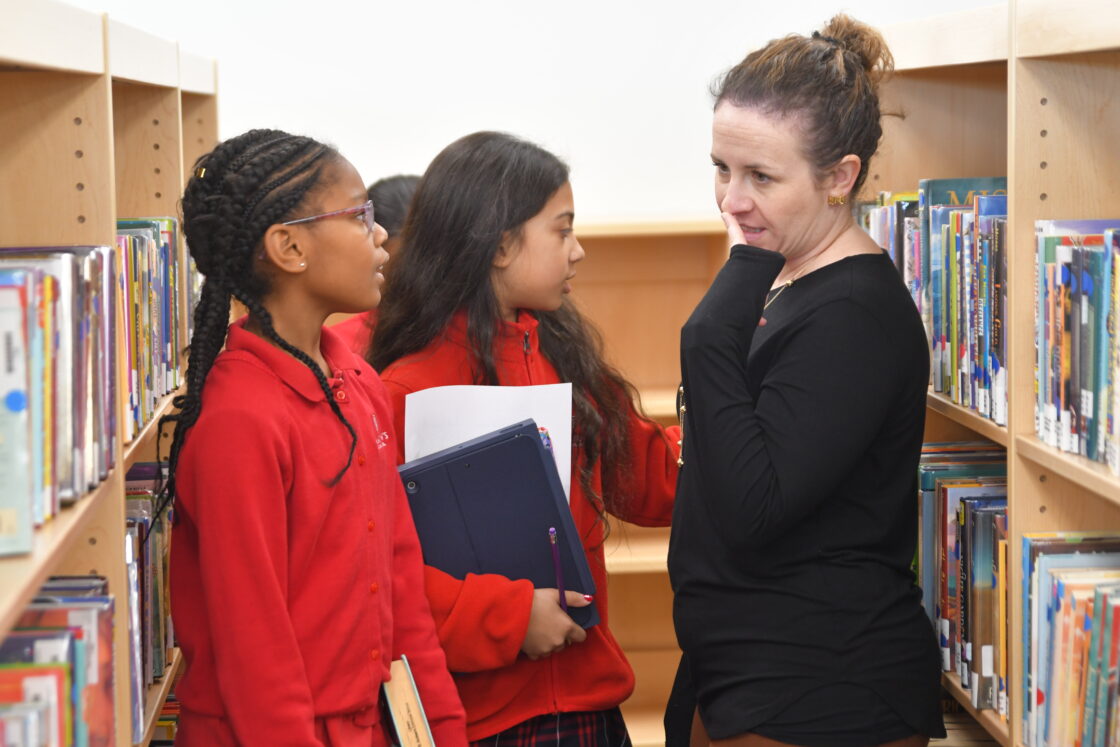
CTTL: You mentioned some of your work with the CTTL and Chris Lewis, and you’ve contributed to a number of the professional learning resources we use in the Lower School. Can you elaborate on those experiences?
AM: When Chris pulled me in for the Roadmap, it was especially for the literacy piece of it. In my training as a librarian along with my work as a resource teacher, and in some of my previous work, the reading and writing has always been my passion to help with. So, [we focused on] the research behind literacy, the research that backs up the phonics and the phonemic awareness, and how we can incorporate that into our writing.
It was really fun to find the research, and I found that some of the things I was using were not actually backed by research. That was trickiest piece for me was realizing that some of things that I believed were not backed by research. And, that collaboration with my colleagues and bringing in the different lenses – my librarian lens, the teacher lens, teachers of older students, and teachers of younger students – and collaborating on what it looks like in the different classrooms with the different age ranges, particularly in terms of literacy, was just really fun. It was really fun to see where everyone was coming from to debunk those myths that some of us thought were true and how we could incorporate that into the Roadmap.
CTTL: What are some of the MBE concepts and strategies that you get excited about sharing with your colleagues?
AM: The ones that I’m most excited about are finding ways to help the students feel welcome and calm when they come into the classroom. Especially as a specialist teacher, I think that seeing students once or twice a week can be a little overwhelming. We might not have that connection with them that the homeroom teacher has, so how can we build those ways to get them to connect with us, build those ways to get them into our space and realize that this is a learning space also? I know that sometimes when they come into the library, they feel like it’s not a classroom space, but how do we really bring them in? So, it’s about finding those well-being pieces like playing a calming video at the beginning of the lesson, finding ways to quickly engage them so that they are in the lesson and in the moment. Those are the fun things that I have fun sharing, like combining the joy and rigor.
In my role as the technology integration specialist, I think I have colleagues who get a bit shut off by [technology]…and don’t want to incorporate it, or don’t know how. So, helping to collaborate in that regard – how can I help, how can I support – takes that well-being and the pedagogy off the teachers shoulders a little bit and helps them know that they’re supported, and that I can be there for them. When I think about the MBE of the teacher practice, knowing that we have support helps the teachers feel a little bit less anxious about things, which helps the students feel less anxious.
CTTL: What are some of the concepts or elements of the learning experience you are focusing on this year with your students?
AM: I think it’s always a journey. Every year I try to set a different goal because there’s only so much you can do at once. I try to pick one thing, and this year I’m really thinking of how I can teach in multiple modalities. Like I said before, I think that having a format of the class is good because the students know what to expect when they come in, but sometimes I think I get stuck in a rut of read aloud, class activity, discussion, check-out. And, while that’s great, I’m working on how I can make that discussion or activity varied so the students are more engaged when they come in. [For example], they’re bringing in their iPads, so how can I really incorporate those iPad lessons in the library lessons into one, or have what they’re doing in their class mirrored in what they’re doing in library? So, I’m working on the collaboration piece with the teachers and finding new and exciting ways to deliver my lessons so that they stick and when students come to library, they remember what they’ve learned in the past and how to apply it for the future.
CTTL: What does success look like for you as a teacher this year, and what does success look like for your students?
AM: I teach Pre-K through third grade so success can look very different. A lot of that is the self-sufficiency piece of it and having students feel confident to be able to know how to – for the youngest learners – turn on my iPad and find the app that my teacher has asked me to use. Or, for the oldest, saying I have an assignment to do and I know which resources to use to find the information that I need. My overall goal is always to make sure that my students are finding and loving literature and reading. It can be difficult because everyone is at different levels, so how can I find those books that bring the joy to the students that they enjoy reading, but also aren’t too challenging for them? A successful year for me is a student coming in and saying, “I love reading, and can you help me find a new book because I loved this one that I had last time?”
CTTL: If you’re talking to your fellow educators and parents, how might you convey the value of MBE to those different groups in the community who might be just starting to understand what it is?
AM: It’s such an important tool that helped me view the students more as individuals. I knew everyone needed differentiation and everyone is different, but it just gave me that lens of changing my practice and thinking of the child and how I’m teaching versus what I’m teaching. I know what I’m teaching, but how I’m teaching it can be a bit different. It’s something as a parent that I’ve taken into account because I can look at my child now and say, “Ok, this is what I want you to know, this is what I’m trying to tell you as a parent, but how am I telling you? And, I know how you, as the child, is going to hear it versus how my other child is going to hear it.” And that’s helped me as a parent.
Taking it one step at a time would be the best advice that I could give. It’s a lot, but when I’m looking at the Roadmap, I can see that I’m already really doing this. These are things that are already incorporated into my practice as a teacher, or into my language as a teacher, or a parent, or a member of the community. I’m already doing it, and I’m already doing it well. And, that doesn’t mean that I ignore it, but it gives me the opportunity to think that I’m already really successful in things that I didn’t even realize were part of MBE. Now, I can take it a step further and ask, “what do I need help with; what can I do to improve my practice now?”
CTTL: Knowing that becoming an MBE practitioner takes some time, what are some of your goals for continuing your development in MBE?
AM: What I’m trying to focus on is making sure that I take advantage of the professional development that the school offers and within the Academy, really connecting with the people who are in my [MBE translation] group and trying to reach out to them. I love being the group leader because I am by no means an expert at this. I have maybe done it a bit longer than [the translation group members] but hearing their ideas and what works and what doesn’t work is something that really benefits me. So, staying connected to other educators, hearing them, finding out what works for them, continuing to use the Roadmap, and setting goals for myself every year.

